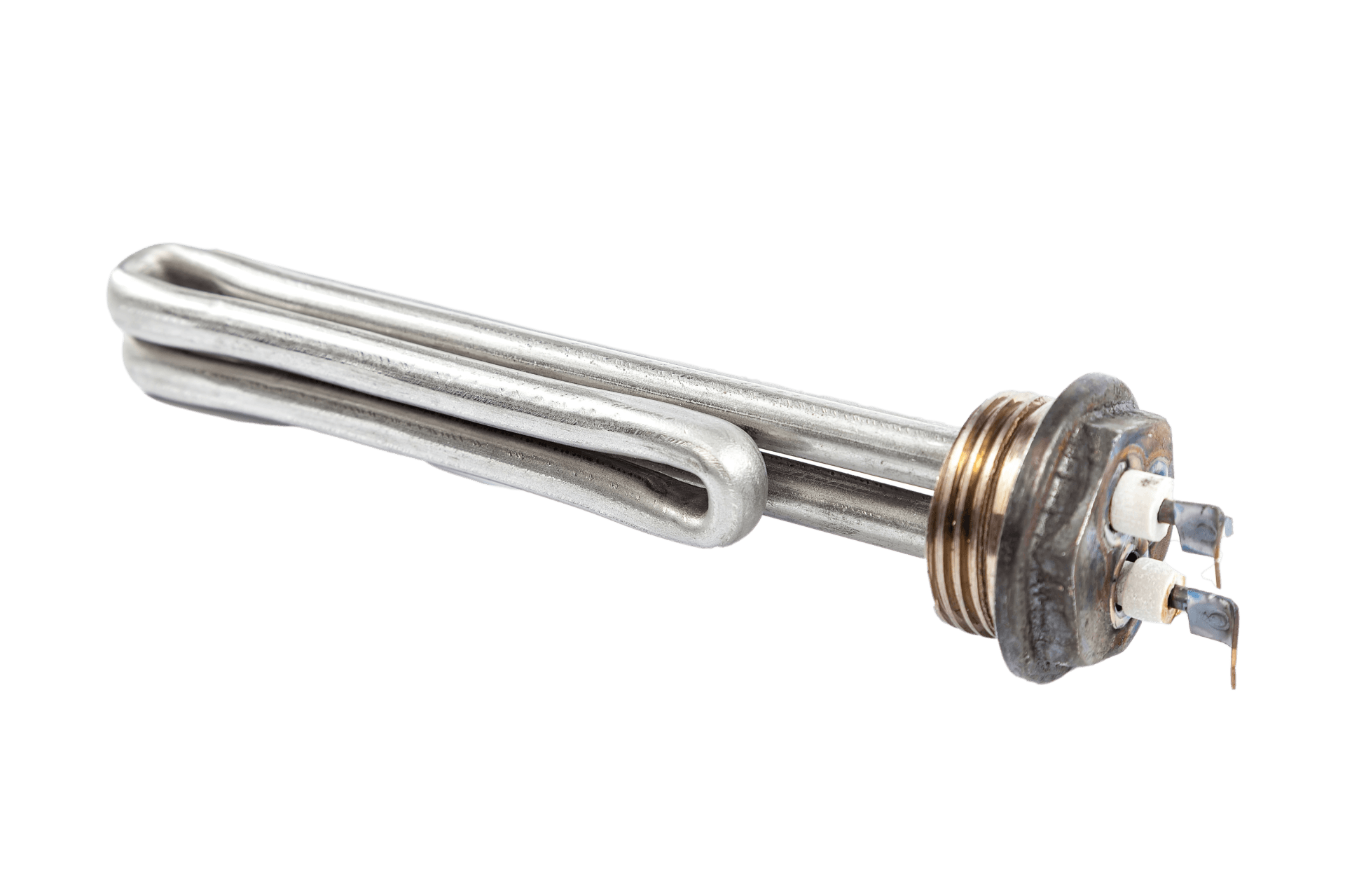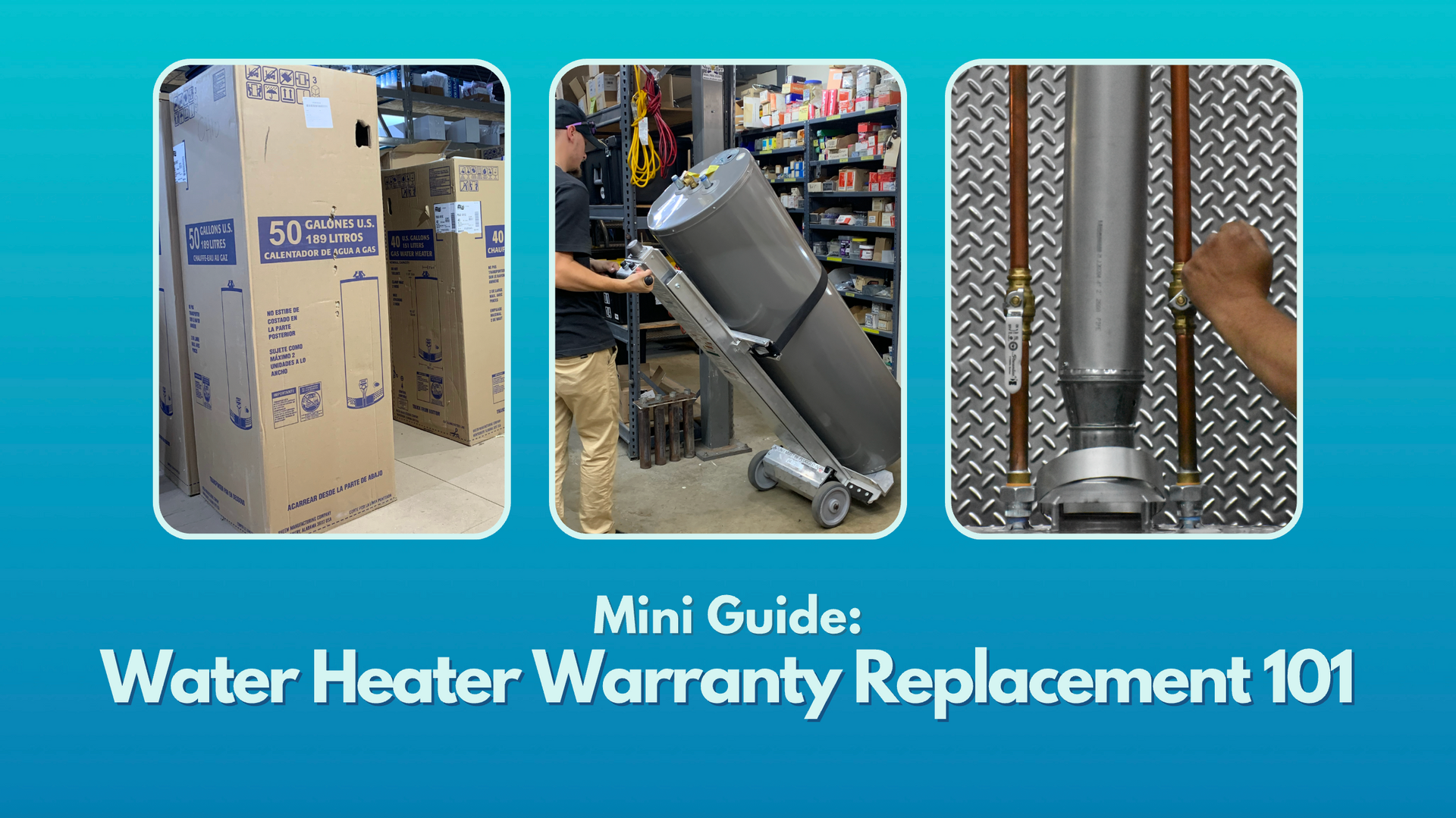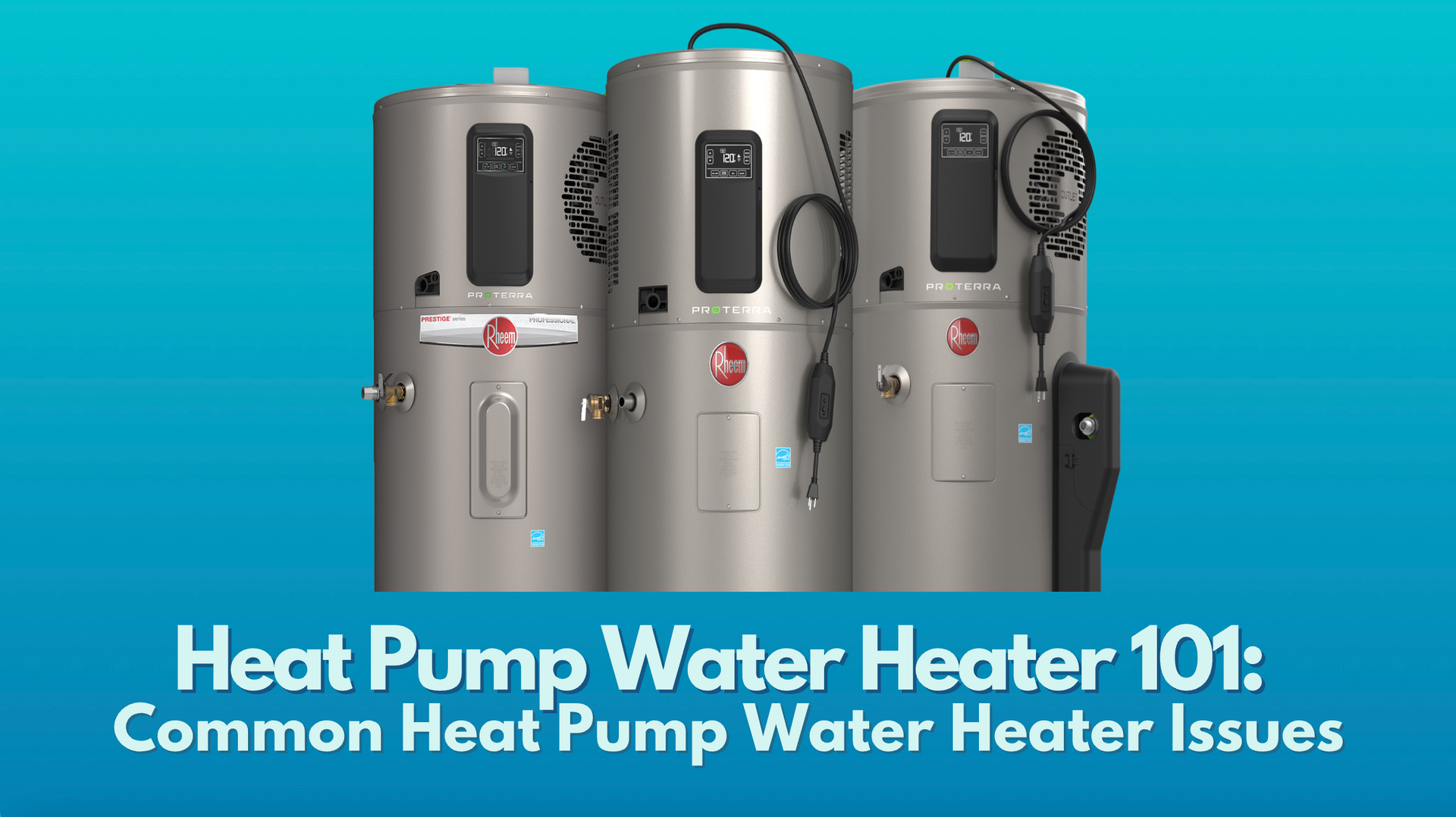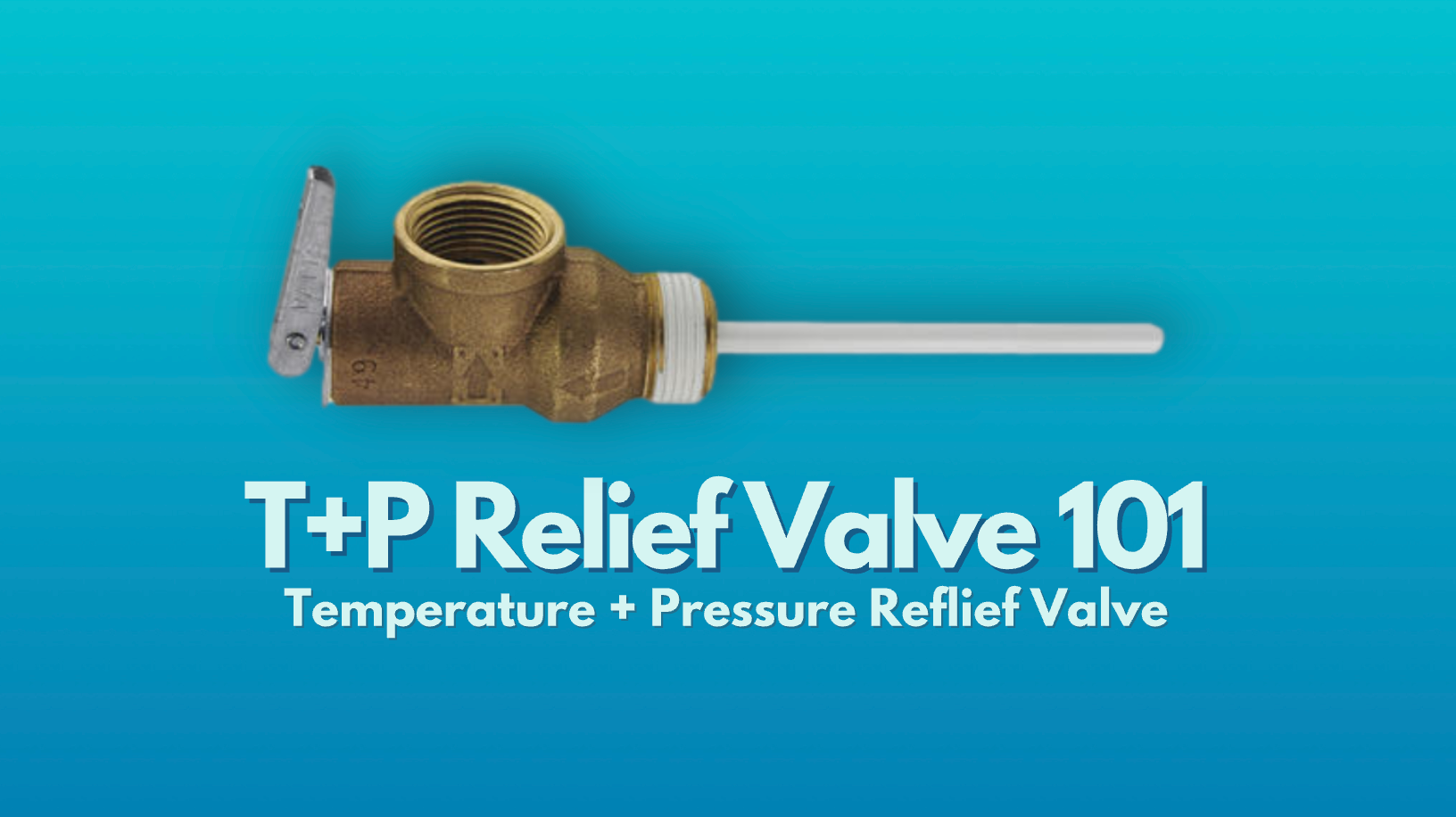How to Troubleshoot an Electric Water Heater
Article Contributor: Stephen H. (Kentucky Service Technician and Licensed Journeyman Plumber)
What to Do When Your Electric Water Heater Doesn't Work
When an electric water heater doesn’t work as expected, technicians will take steps to troubleshoot the problem and repair the damage before replacing the entire unit. Learn more about what to expect when your water heater tech troubleshoots your electric water heater for some of the most common electric water heater problems.
No Hot Water (No Power to Unit)
In this situation, the hot water has no power to the unit and doesn’t produce hot water. This usually indicates that the unit isn’t receiving power, so the tech will determine the cause of the power issues.
Step One: Verify Proper Installation
Water heaters should be hardwired to the breaker panel with the appropriate size wire and breaker. Plugging them into a standard outlet is NOT ideal.
The typical outlet supports 110v, while most electric water heaters require 240v to operate correctly. If the water heater is not getting the correct voltage or no power at all, it will not operate.
Step Two: Check the Wires for Damage
Electrical wires are susceptible to damage, especially when dangling haphazardly from the water heater or resting on the floor. Keep wires organized and out of reach of pets/children.
If a power cord does become damaged, it will not be able to properly transport energy to the unit. Furthermore, it can create an electrical fire hazard. Conduit can be installed to protect the wiring from damage.
Your technician will determine damage by following the wiring to look for physical damage.In the case of a wire being damaged the technician will need to repair/replace the wire.
Step Three: Press the Reset Button
Electric water heaters automatically shut down when they encounter overheating or power issues, causing them to stop producing hot water.
Electric water heaters have a red “reset” button in the control panel. In order to access the reset button, you will need to open the control panel (which may require a screwdriver), and remove the insulation. Pressing the “reset” button will restore power to the unit.
Keep in mind that if your water heater experiences constant overheating due to a faulty thermostat, it will continue to shut down until you fix the problem with the thermostat.
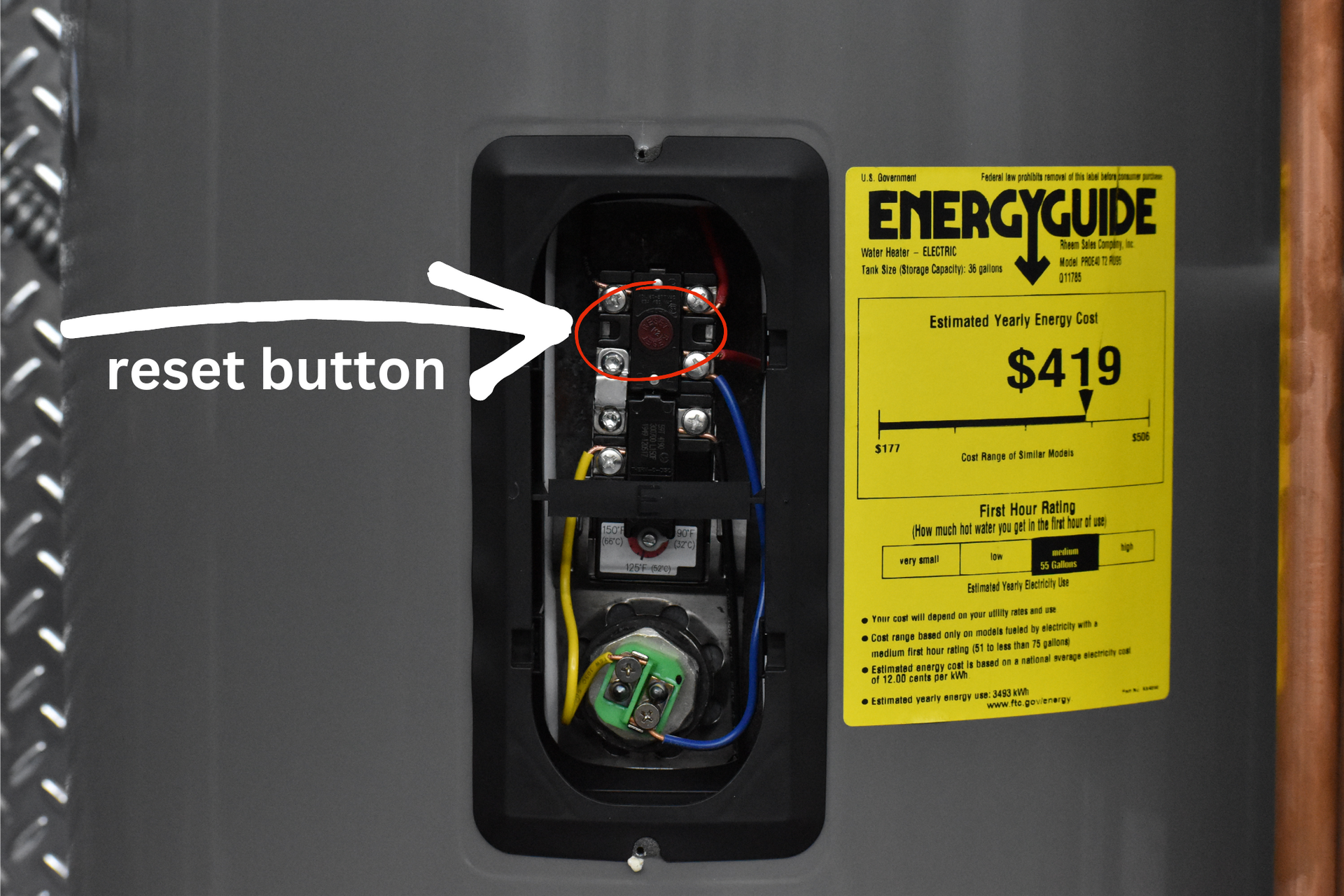
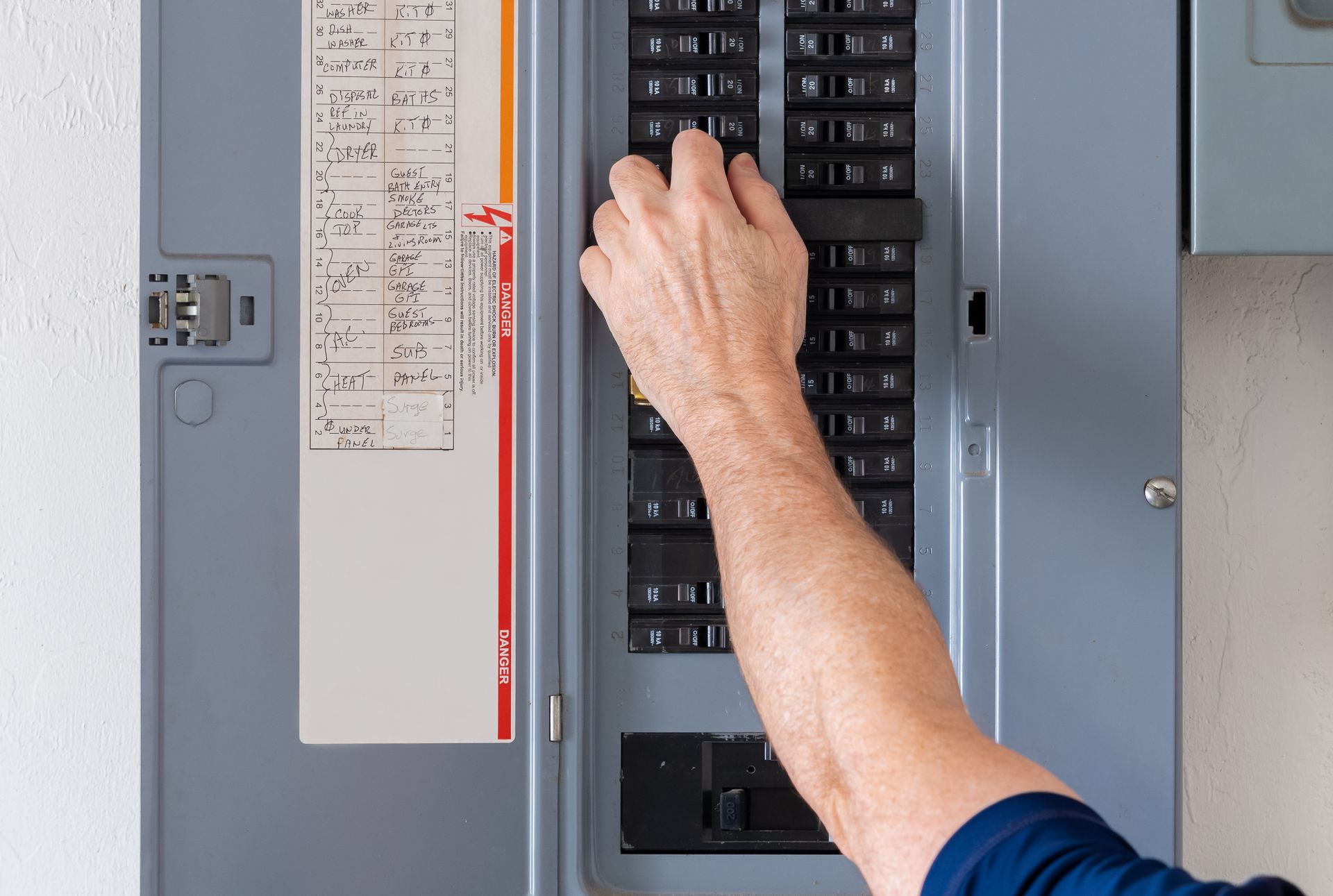
Step Four: Reset the Circuit Breaker
If the water heater still doesn’t receive power after hitting the reset button, reset the power from the circuit breaker.
Every home has a breaker box with multiple circuits. These circuits control all of the power in your home. Find the circuit for the water heater and switch it to restore power.
No Hot Water (Power to Unit)
This situation involves a water heater receiving power but not producing hot water. In this situation, if the temperature is set properly, you probably have a bad thermostat or a bad heating element.
Some units have lights to indicate power, but other units without lights require a multimeter to test the device for power.
Step One: Verify Temperature
Verify the temperature setting of the water heater. The U.S. Consumer Product Safety Committee (CPSC) recommends a water heater temperature setting of 120°F, so the thermostat should read 120°F or close to that.
Remember to read both thermostats. Most electric water heaters have two heating elements - an upper element and a lower element. The lower heating element heats the lower half of the water before the upper element heats the top half of the water. A separate thermostat controls each heating element. On a cold tank of water the upper element will heat the upper ⅓ of the
tank first until it is satisfied, then switch and send power to the lower element until it is satisfied.
Step Two: Test the Thermostat and Heating Element For Voltage
A multimeter measures electrical current. You can use your multimeter to verify that your thermostat and heating element are working properly.
Disclaimer: Risk of electrical shock! Do not attempt to do this yourself if you do not have the proper training!
First, you’ll need to get familiar with your multimeter. A red lead measures electricity. A black lead acts as the ground. Most multimeters measure voltage, amps, ohms, and various other electrical measurements.
You’ll also need to remove the control panel cover of the upper element and any insulation to expose the electrical terminals. Maintain electricity to the water heater.
Next, you will set your multimeter to read alternating voltage. Place the leads to the top two screws of the upper thermostat. You should get a reading of 240v (or close). This indicates that the unit is receiving power.
Next, place your leads to the terminals connected to the heating element. If you receive a similar rating of 240v, your heating element is receiving power.
If the heating element isn't receiving power yet the unit is receiving power, that tells you that there’s a problem with the thermostat, unless the thermostat is satisfied with the temperature of the tank. If you turn the temperature dial on the thermostat up higher than the temperature of the tank and there is still no power to the element, them the thermostat is faulty and needs replaced.
Step Three: Test the Thermostat for Ohms
If the unit receives power but you don’t get any hot water or the unit keeps shutting down, you should test the thermostat for continuity. To test the thermostat, disconnect the power wires to prevent the risk of electric shock and isolate the thermostat.
After you disconnect the power cables, set your multimeter to read ohms. Place both leads on the left terminals before doing the same to the right terminals.
When testing for continuity, you want the reading to be as close as possible to zero. If the numbers are higher than zero, it can indicate that the water is too hot, meaning the thermostat is defective. Your technician will replace any damaged thermostat.
Leaking Water Heater
Water heaters should hold hot water. When the tank allows water to pool underneath it, that’s a major sign of a problem.
Step One: Verify Location of the Leak
You will need to learn the location of the leak before moving forward. A leak can develop at the drain valve, the pressure relief valve, a water line near the unit, or the tank itself.
The drain valve allows you to empty the tank of water for repairs or replacement. When fully closed, water should not drip from the valve.
The temperature and pressure relief valve relieves the tank of excess pressure that can be caused by thermal expansion, high incoming water pressure (150psi and above), or sometimes a sticky thermostat. Generally if it leaks its actually doing what its supposed to, and the issue can be resolved by installing a pressure regulating valve and/or expansion tank. In rare cases the relief valve can fail over time from the spring or seal inside the valve weakening over time. This valve should NEVER be capped/plugged, and should be piped to a floor drain or outside the building.
A water heater leak from the tank indicates a broken weld or corrosion. Corrosion refers to the natural deterioration of metal, which happens rather quickly when metal comes into contact with water and heat. In the case of a leak from the steel tank itself, the damage cannot be repaired.
Step Two: Tighten or Replace Affected Valves
In the case of a damaged drain valve, try tightening the valve with a screwdriver. If that doesn’t work, replace the valve with a new drain valve.
Step Three: Replace the Water Heater
In the case of a corroded tank, the owner will need to replace the water heater. You can’t replace the corroded material.
Use this opportunity to upgrade your hot water system with a more efficient or more powerful unit.
U.S. Water Heating Solutions
When your electric water heater stops working, contact the water heating experts at U.S. Water Heating Solutions. A tech will come to diagnose and repair your electric water heater if possible. In the case that the water heater can’t be repaired, your tech can install a new water heater for you.
Contact U.S. Water Heating Solutions at 833-879-4776 or
request a quote online!




